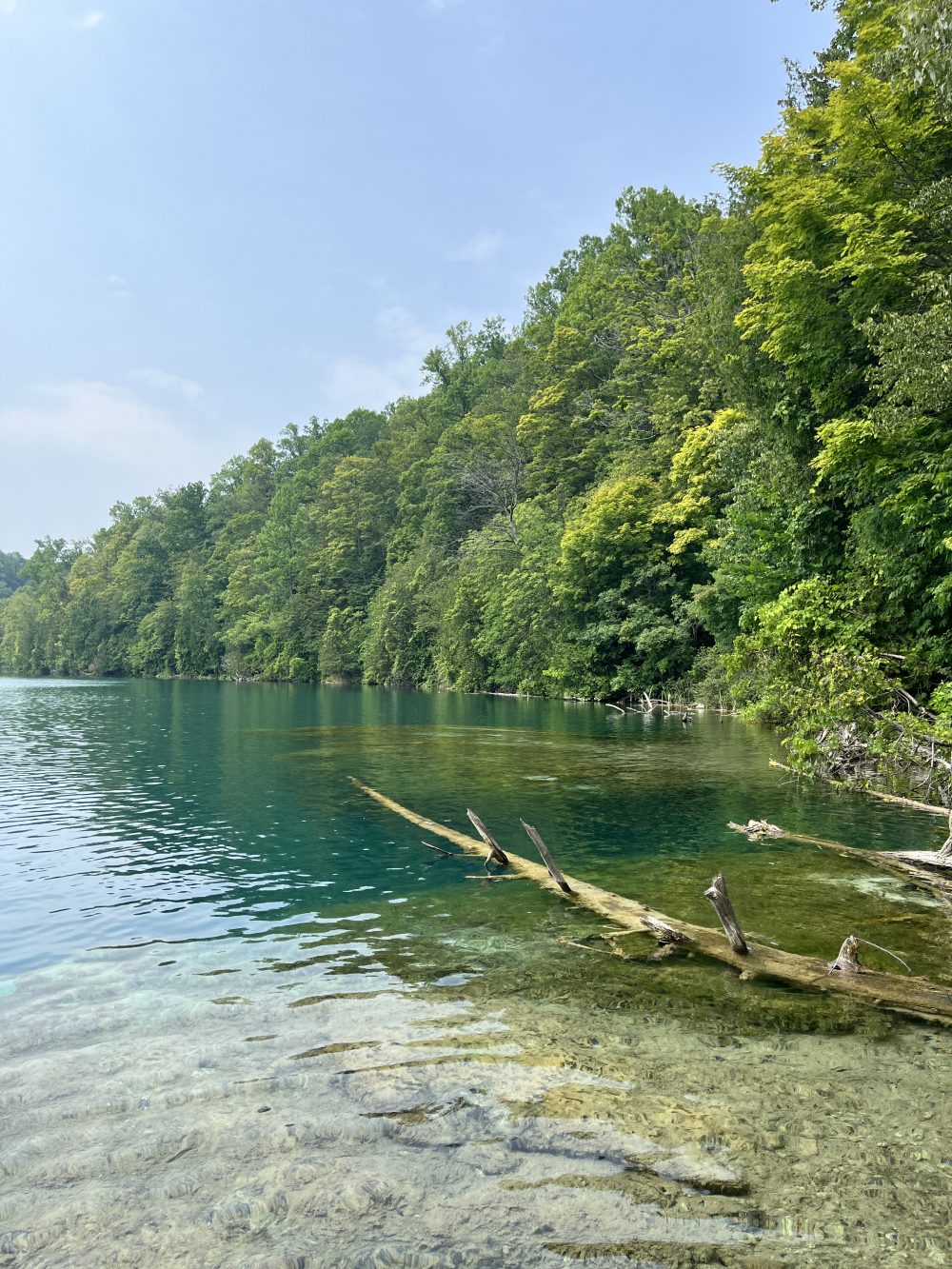NASA-funded CCI research quantifies weight of all viruses in the Great Salt Lake with novel technique

The Great Salt Lake in Salt Lake City, Utah isn’t just one of the most well-known ecological features in America and one of the largest lakes on the planet. Like all lakes, it is also teeming with viruses that are not harmful to humans and only infect microbes, and instead play pivotal roles in maintaining the massive amount of biological diversity that calls the lake home.
The idea of counting all of these often microscopic organisms in this enormous lake’s billions of cubic yards of water may sound far-fetched, but University of North Carolina at Charlotte scholars have done just that. They’ve also discovered that all of the viruses in this massive lake weigh as much as one standard red brick, and could fit inside of a single gallon jug.
New research from UNC Charlotte’s Charlotte’s North Carolina Research Campus (NCRC) and the Center for Computational Intelligence to Predict Health and Environmental Risks (CIPHER), within the College of Computing and Informatics (CCI) has demonstrated a novel, cost-effective way to measure virus populations with enough precision to determine the approximate total weight of viruses in bodies of water, findings that could have significant implications for environmental preservation, public health, astrobiology and more.
“In our lab, we are big advocates for people being able to understand science and viruses in general terms,” said Madeline Bellanger, a UNC Charlotte Ph.D. student studying under Assistant Professor of Bioinformatics and Genomics Dr. Richard Allen White III. “With the COVID-19 pandemic, we really saw that people need to understand viruses, how most cause no human disease, how essential they are to life on this planet, how they work, and help the public understand why scientists like us do the things they do.”
In a recent study written by Bellanger and White published in the American Society for Microbiology’s Applied and Environmental Microbiology journal, the two scholars along with Dr. Pieter Visscher of the University of Connecticut demonstrated a new way to measure the levels of viruses in two major lakes in the United States — the Great Salt Lake (GSL) and Green Lake (FGL) outside of Syracuse, New York — that is significantly less expensive to undertake than the standard microscopic sample measurement technique generally used to examine aquatic samples.
With the innovative microscopic measurement technique Bellanger and White used in this study — which involves illuminating fluorescent dye added to lakewater samples with a microscope to highlight viruses, a process that is much cheaper due to not relying on the expensive filters traditionally used in wet sample imaging — the Charlotte researchers were able to not only extrapolate just how many viruses were present in each lake they studied, but were also able to calculate the approximate total weight all viruses present based on a standardized measurement of the weight of a typical virus.
“The entire weight of all the viruses in [Green Lake] and [the Great Salt Lake] are ∼598 g and ∼2.2 kg, respectively; this is equivalent to a loaf of bread for [Green Lake] and [a] standard brick for [Great Salt Lake],” the scholars found. They further elaborated that if concentrated together, the approximate volume of all of the viruses in Green Lake and the Great Salt Lake would equal “a standard salad dressing bottle” for the first lake and “a standard gallon milk jug” for the second.

Funded by a prestigious NASA Exobiology grant awarded to White and Visscher in 2023, this study focused on the Great Salt Lake and Green Lake in particular due to the presence in both lakes of microbialites, the “living rock” solid organic structures much of White’s research focuses on and which NASA is keenly interested in due to their significance as “sign-posts” for life on Earth and, potentially, on other planets (e.g., Mars, Titan, or Enceladus).
White and his students study the important role that viruses play in the formation of microbialites, specifically in the mineralization and lithification of the hard carbonate concrete structures. Along with their collaborators, they plan on revealing the viral mechanisms influencing the formation of microbialites, which represent Earth’s first ecosystems, that harbored and developed the first lifeforms within our planet’s harsh primordial environment. A deeper understanding of microbialites could also potentially lead to developments like using them to trap gasses (e.g., carbon dioxide) that are involved in climate change, White and colleagues hypothesize.
“If we can understand how many viruses are here, then we can better understand their impact on the lakes and the microbialites themselves,” Bellanger explained.
Since many modern microbialite structures are thousands upon thousands of years old and fossilized versions are billions of years old, they hold important biological information about ancient life and environmental conditions. Microbialites can also provide numerous proxies of biogeochemistry within modern and primordial ecosystems on Earth that can be related to our search for life beyond our planet. The first viruses and life may have originated and evolved on microbialites; now, microbialites may need viruses in order to grow and stay alive.
Drought due to climate change has made microbialites vulnerable as water is essential for continued growth and maintenance, which is becoming more difficult given the documented shrinkage of bodies of water including the Great Salt Lake and Green Lake. White and Bellanger hope that by further studying these lakes and the viruses that inhabit them, they and other scholars will learn more about how to maintain them for future generations to come.
“We continue to educate the public that not all viruses make us sick. Most viruses, 99.99% of them, cause no human disease,” White said. “The human virome, which is all viruses present inside and on the surface of the human body, is critical for training our immune system, and viruses are crucial in global nutrient cycling and the health of our planet. We want to help grow that awareness that without viruses none of us would exist, and being able to focus on and put these findings in understandable terms for the public at large is what we’re trying to do.”